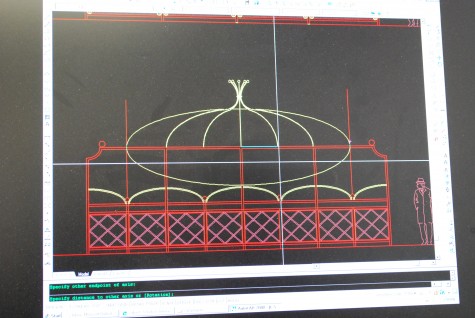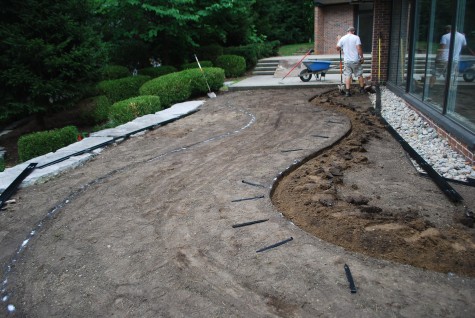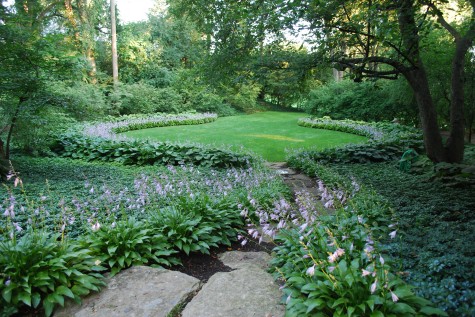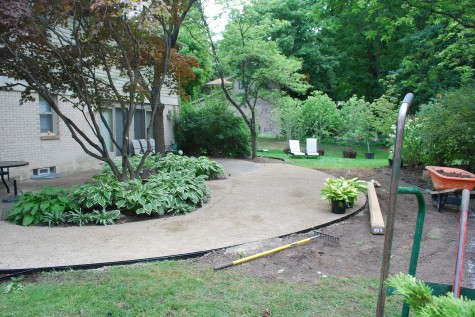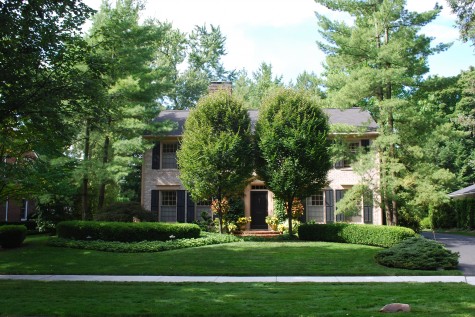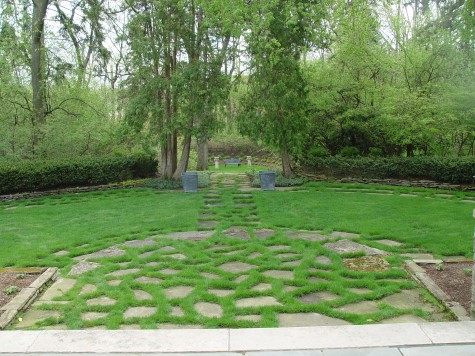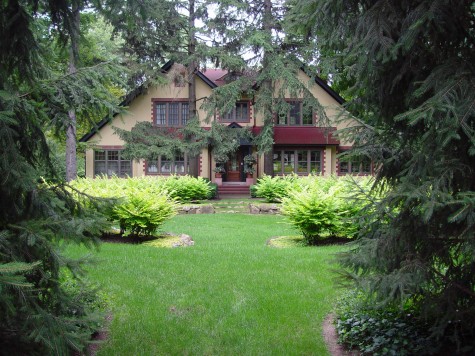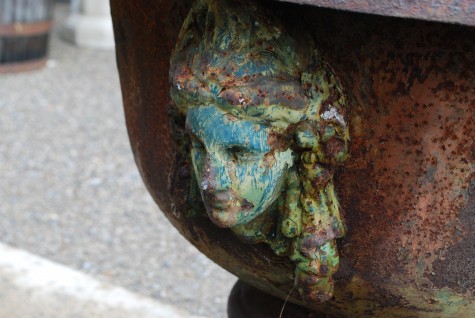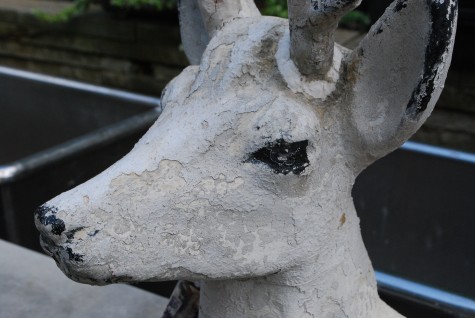 Who knows how many times my Mom read The Secret Garden to me. Once I learned to read on my own, I doubled up my exposure to this well known children’s tale. Though I was taken in by the relationship that was forged in the privacy of a beautiful garden, I was more fascinated by the garden itself. Walled off from the world, quiet, serene-the possibility of a completely private world all of one’s own imagination and invention enchanted me. I have clients who live in old neighborhoods in close proximity to other families. Those neighborhoods are in transition now. Old modestly sized homes are being torn down in favor of much larger homes.
Who knows how many times my Mom read The Secret Garden to me. Once I learned to read on my own, I doubled up my exposure to this well known children’s tale. Though I was taken in by the relationship that was forged in the privacy of a beautiful garden, I was more fascinated by the garden itself. Walled off from the world, quiet, serene-the possibility of a completely private world all of one’s own imagination and invention enchanted me. I have clients who live in old neighborhoods in close proximity to other families. Those neighborhoods are in transition now. Old modestly sized homes are being torn down in favor of much larger homes.
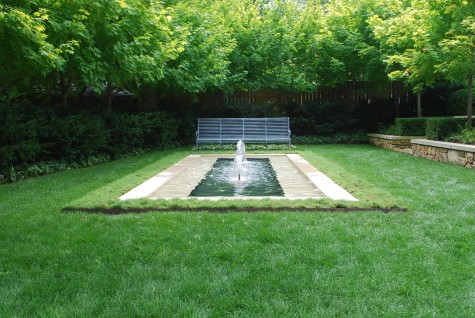 I have a client in just such a situation. The lot behind her has been summarily clear cut; a large home is in the works. All the the old trees on the lot line that screened her from that neighbor are gone. An old and deteriorated home next door has been sold, and is scheduled to be razed. A new home, no doubt bigger and taller than homes original to the neighborhood has her feeling under siege. On the garden tour this July she commented to me that though I live in an old neighborhood with small lots and many large two-story homes, my yard is completely private. She had an interest in staying ahead of the construction that would loom over her on two sides of her property for the at least two years.
I have a client in just such a situation. The lot behind her has been summarily clear cut; a large home is in the works. All the the old trees on the lot line that screened her from that neighbor are gone. An old and deteriorated home next door has been sold, and is scheduled to be razed. A new home, no doubt bigger and taller than homes original to the neighborhood has her feeling under siege. On the garden tour this July she commented to me that though I live in an old neighborhood with small lots and many large two-story homes, my yard is completely private. She had an interest in staying ahead of the construction that would loom over her on two sides of her property for the at least two years.
 Lots in her community are small; the parcels reflect a time and place long past. She was willing to reduce the width of her driveway to less than 9 feet, if it meant that she could plant screening in anticipation of a new house next door. I understand this need. I like my neighbors, but I like my private garden more. I have no need or inclination to be privy to what my neighbors are up to. Most importantly, I want the sanctuary that a landscape can provide. We saw cut a strip out her asphalt driveway so we had room to plant.
Lots in her community are small; the parcels reflect a time and place long past. She was willing to reduce the width of her driveway to less than 9 feet, if it meant that she could plant screening in anticipation of a new house next door. I understand this need. I like my neighbors, but I like my private garden more. I have no need or inclination to be privy to what my neighbors are up to. Most importantly, I want the sanctuary that a landscape can provide. We saw cut a strip out her asphalt driveway so we had room to plant.
 Arborvitae as a screening material in a right space has its limitations. When very tall, they fall prey to ice storm damage. They grow wider than one would like. Like many evergreens, they are much narrower at the top than the bottom. If you need screening up high, a layered planting works well. Deciduous trees provide great screening of a neighboring second floor. A columnar tree takes up relatively little room on the ground plane. Carpinus, gingko, tulip tree, beech, amelanchier,-there are plenty of choices. Planting an amiable evergreen between the columnar trees gives you an evergreen screen occupying the first five feet out of the ground-excellent. Driving up the drive, or walking down the drive for the mail, there is privacy.
Arborvitae as a screening material in a right space has its limitations. When very tall, they fall prey to ice storm damage. They grow wider than one would like. Like many evergreens, they are much narrower at the top than the bottom. If you need screening up high, a layered planting works well. Deciduous trees provide great screening of a neighboring second floor. A columnar tree takes up relatively little room on the ground plane. Carpinus, gingko, tulip tree, beech, amelanchier,-there are plenty of choices. Planting an amiable evergreen between the columnar trees gives you an evergreen screen occupying the first five feet out of the ground-excellent. Driving up the drive, or walking down the drive for the mail, there is privacy.
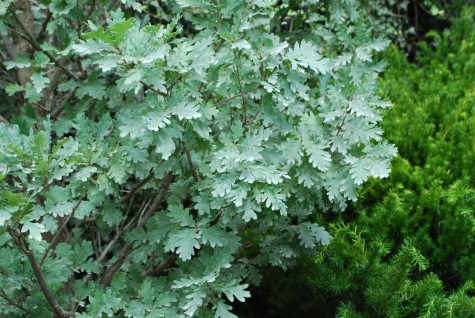 This columnar English oak hybrid, Crimson Spires, has densely growing blue green leaves, and a decidedly columnar habit. This cultivar of English oak is stubbornly hardy-never mind its good looks. In two years these trees will be branching out such that my client will get the gist of her secret garden. Within 8 years whatever goes on next door will not be part of her landscape.
This columnar English oak hybrid, Crimson Spires, has densely growing blue green leaves, and a decidedly columnar habit. This cultivar of English oak is stubbornly hardy-never mind its good looks. In two years these trees will be branching out such that my client will get the gist of her secret garden. Within 8 years whatever goes on next door will not be part of her landscape.
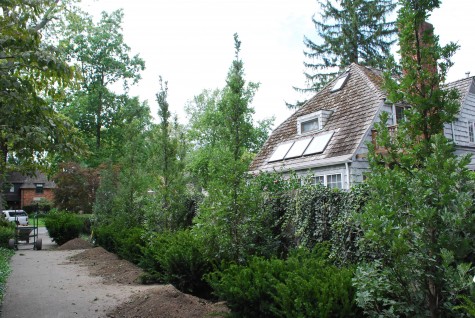 On the lower level, we have another issue to address. The neighbors wood fence is old and quite deteriorated. What will be when that fence is replaced, or not replaced? The densiformis yews will make how the new neighbors will handle their landscape their issue, and not hers.
On the lower level, we have another issue to address. The neighbors wood fence is old and quite deteriorated. What will be when that fence is replaced, or not replaced? The densiformis yews will make how the new neighbors will handle their landscape their issue, and not hers.
We planted a secondary screen which will add another layer of privacy to the back yard. The arborvitae “Emerald Green” has a beautiful deep green color year round, and grows quite dense. I will recommend that this hedge be maintained at the height of the gutter on the garage. This will make the maintenance of the hedge more manageable. It will also make the rear yard garden entirely private from this side.

We will see if the narrower drive is easily negotiable. If it proves to be too narrow, there is an option to add a little more drive on the house side. The views out from the windows on this side of the house will be green.

